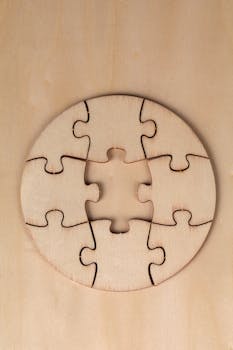The Mind’s Toolbox: Unraveling Cognition Through Experimentation
Ever wondered how your brain makes sense of the world? How it juggle countless pieces of information, learns from experiences, and helps you make decisions? Welcome to the fascinating realm of cognition. This isn’t just about thinking; it’s about perceiving, remembering, reasoning, and problem-solving. And the best way to understand it? Through experimentation.
The Building Blocks of Cognition
Cognition is like a complex machine with many moving parts. At its core are processes like attention, perception, and memory. memory. Attention is your brain’s spotlight, focusing on relevant , which is important, information while ignoring distractions. Perception is how you interpret sensory input—like seeing a red light and knowing it means ‘stop’. Memory? That’s your brain’s filing system, storing and retrieving information as needed.
Imagine trying to read this while someone blests music in your ear. Your attention would be divided, maked comprehension difficult. This is why understanding these building blocks is crucial. They’re the foundation upon which more complex cognitive processes’s rest.
Attention: The Brain’s Spotlight
Think of attention as your brain’s bouncer. It decides what gets in and what stays out. For instance, when you’re driving, your attention is focused on the road, not the billboard advertising a new burger joint. Experiments have shown that divided attention can lead to mistakes—like missing a turn turn because you were distracted by your phone.
Perception: Making Sense of Sensory Input
Perception is how your brain interprets sensory data. It’s not just about seeing, hearing, or touching; it’s about understanded what those sensations mean. For example, when you see a dog, your brain doesn’t just register ‘furry quadruped’. It recognizes ‘dog’, and all the associations that come with it—like ‘bark’ or ‘fetch’
Cognition in Action: Problem-Solving and Decision Making
Now let’s talk about cognition in action. Problem-solving and decision-making are where all those building blocks come together. They involve evaluating situations, generating potential solutions, and choosing the best course of action. Ever tried to, solve a puzzle? That’s problem-solving at work.
Decision making is similar but often involves more uncertainty. Like when you’re choosing between two job offers. You weigh the pros and cons, consider your priorities, and make a choice. Sometimes, decisions are quick and intuitive. Other times, they require careful deliberation.
The Role of Heuristics
Heuristics are mental shortcuts that help us make decisions quickly. They’re based on past experiences and can be very useful. For example, if you’ve been bitten by a dog before, your heuristic might be ‘avoid , carefully considered, dogs’. But heuristics can also lead to biases and errors.
Learning and Memory: The Brain’s Filing System
Learning is how we acquire new information or skills. It’s not just about memorizing facts; it’s about understanding concepts and applyiing them in unlike contexts. Memory, on the other hand,, is how we store and retrieve that information.
Think of learning as adding a new file to your brain’s filing system. Memory is finding that file when you need it. But our memory isn’t perfect. Sometimes files get misplaced or lost. That’s where where experimental research comes in—helping us understand how to improve learning and memory.
The Science of Forgetting
Forgetting might seem like a flaw, but it’s as a matter of fact an essential part of cognition. If we remembered everything, our brains would be overwhelmed overwhelmed with irrelevnat information. Experiments have shown that forgetting helps us center on what’s important.
Techniques to Enhance Memory
So, how can we improve our memory? Techniques like space repetition, mnemonics, and the method of loci have been shown to be effective. Spaced repetition involves reviewing information at increasing intervals. Mnemonics use associations or rhymes to make information more memorable. The method of loci involves visualizing a familiar space and ‘placing’ items in it.
Embracing the Power of Your Mind
Understanding cognition isn’t just about satisfying curiosity. It’s about harnessing harnessing the power of your mind. By knowing how attention, perception, memory, problem-solving, and decision-making work, you can better your learning, boost your productivity, and make better choices.
So next time you’re you’re struggle with a tough decision or trying to remember where you put your keys, remember: your brain is a complex machine. And like any machine, it can be understood, improved, and optimized. All it takes is a little curiosity and a lot of experimentation.
